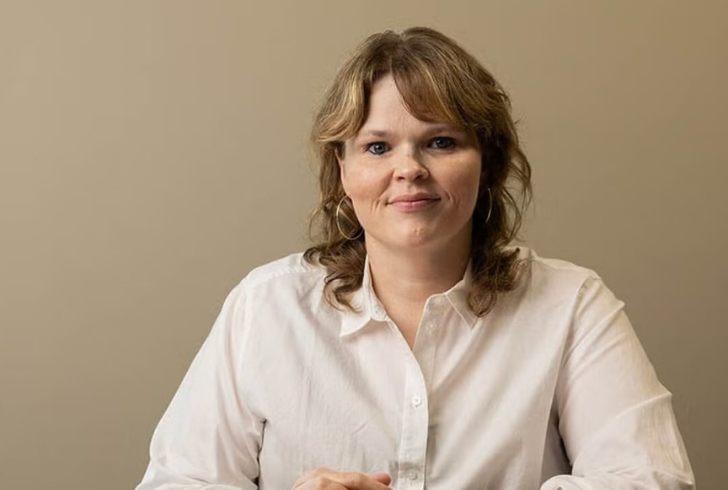3,800-Year-Old Artifacts Reveal New Insights Into Ancient History
Nestled in modern-day Iraq, the 3,800-year-old city of Kurd Qaburstan has intrigued archaeologists for decades. Recently, groundbreaking discoveries, including clay tablets inscribed with cuneiform script, a game board, and monumental architectural remains, are offering an unprecedented glimpse into life in this Bronze Age settlement from 1800 BC.
Unearthing Ancient Mesopotamia

Instagram | ucfcah | Tiffany Earley-Spadoni uncovers Kurd Qaburstan’s ancient history with key discoveries.
A team, led by Tiffany Earley-Spadoni, an associate professor of history at the University of Central Florida, is excavating the historic Kurd Qaburstan site. Located in the Erbil region of northeastern Iraq, this city holds secrets that could reshape our understanding of Mesopotamian history. The team’s findings not only illuminate the lives of its inhabitants but also highlight the city’s interactions with neighboring regions.
Among the most remarkable discoveries are clay tablets bearing cuneiform script, the world’s earliest writing system. These wedge-shaped symbols represent syllables and words, providing a valuable window into literacy, language, and daily routines during the Middle Bronze Age.
Exploring Early Literacy
The inscriptions on the clay tablets could potentially rewrite the history of northern Mesopotamia by offering insights into how literacy developed in cities like Kurd Qaburstan. Unlike the better-documented southern regions of Mesopotamia, northern cities remain largely unexplored in this context. Furthermore, Earley-Spadoni emphasized the importance of telling the city’s story from the perspective of its own people, rather than relying on external records.
The Cradle of Civilization
Situated in the Tigris-Euphrates river system, Mesopotamia is often regarded as the birthplace of human civilization. Encompassing parts of modern-day Iraq, Iran, Turkey, Syria, and Kuwait, this region gave rise to innovations such as the wheel, mathematics, and writing. Consequently, Kurd Qaburstan’s discoveries add another piece to this historical puzzle, revealing its role in the social and cultural fabric of the Bronze Age.
Mapping the City’s Layout
The team has focused on two primary areas: the residential neighborhoods in the northwest and a newly discovered palace in the lower town. By using magnetometry—a technology that detects architectural layouts underground—researchers have been able to excavate strategically and preserve the site’s integrity.
Discoveries in the Palace
The palace excavation unveiled monumental architecture, human remains, and evidence of destruction, possibly linked to ancient warfare. These findings not only highlight the palace’s significance but also suggest that it played a central role in the city’s governance and culture.
Everyday Life in the Neighborhoods
In the residential areas, researchers uncovered pottery, animal bones, and everyday items like plates and cups. Interestingly, the diverse diet of the city’s inhabitants included domesticated meats and wild game, suggesting a blend of elite and common lifestyles.
Reconstructing Bronze Age Life

Instagram | ucfcah | Archaeologists explore daily life at Kurd Qaburstan and reveal its rich history.
Kurd Qaburstan dates back nearly 4,000 years, to the era of King Hammurabi, known for his pioneering legal code. While much attention in Mesopotamian studies has focused on palaces and temples, this research shifts focus to the lives of ordinary people. By examining their homes, tools, and diets, archaeologists are piecing together a more comprehensive picture of this ancient society.
Modern Techniques in Archaeology
The use of magnetometry has revolutionized the excavation process at Kurd Qaburstan. This technology enables researchers to map buried structures without extensive digging, preserving the site for future studies. Moreover, such innovations have accelerated discoveries, making it easier to explore large areas efficiently.
Significance of the Findings
The artifacts and records unearthed at Kurd Qaburstan enrich our understanding of Mesopotamian culture and governance during the Middle Bronze Age. In particular, these findings not only challenge previous assumptions about social divisions and literacy but also offer a more nuanced view of life in ancient Mesopotamia.
As a result, as excavations continue, researchers hope to uncover more about the city’s inhabitants and their relationships with neighboring regions. Ultimately, each discovery brings us closer to understanding the complexities of this ancient civilization and its enduring legacy.